#hair history
Text

[Haircare during Edo period], handy illustration by Sayuri Sasai.
As time went, Edo hairstyles became more and more intricated. Hairdos were set using plenty of styling products, like 梳き油 sukiabura (creamy pomade) or 付け油 tsukeabura (solid pomade). Many recipes existed, varying in bases (like 椿油 tsubakiabura/camellia oil, 菜種油nataneabura/canola oil, 木蝋 mokurô/sumac wax etc.) and fragrances used.
Once set, hairstyles did not fell apart easily, but the oils used meant hair easily caught dust or dander - hence why people used tenugui or other kinds of hoods to protect their hair (see those past notes 1 / 2):

In the past, washing one's hair was usually done once or twice per month (in the meantime, to relieve itchy scalp, people often used hairpins to scratch without unraveling hairdo!).
Dirt and wax were washed off using hot water and shampoo made from dried 布海苔 funori (a type of red algae) and うどん粉 udonko (wheat flour). You can see here an attempt at recreating the mix.
Then, hair was allowed to dry naturally (taking care of not catching a cold in freezing weather!).
#japan#fashion history#Sayuri Sasai#hair history#nihongami#japanese hairstyle#washing hair#shampoo#art#edo era#edo period#hair oil#hair wax#hair pomade#tsukeabura#sukiabura#tsubakiabura#tea seed oil#camellia oil#nataneabura#canola oil#mokurou#sumac wax#tenugui#hood#zukin#funori#dried seaweed#red algae#udonko
783 notes
·
View notes
Text
okay i know alot of people dont like the 1870s and i find that so insane cause have you SEEN the hair

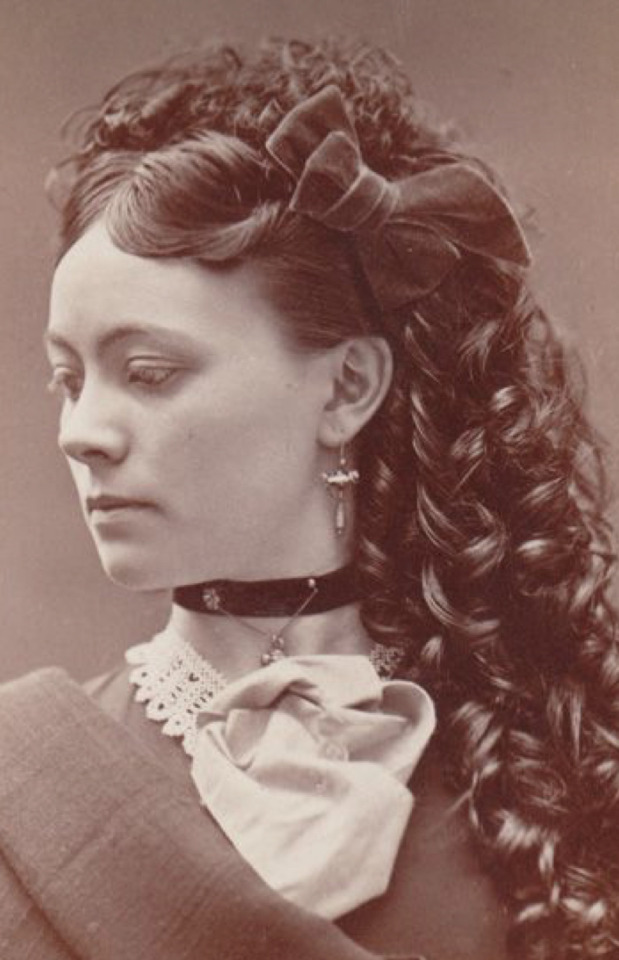
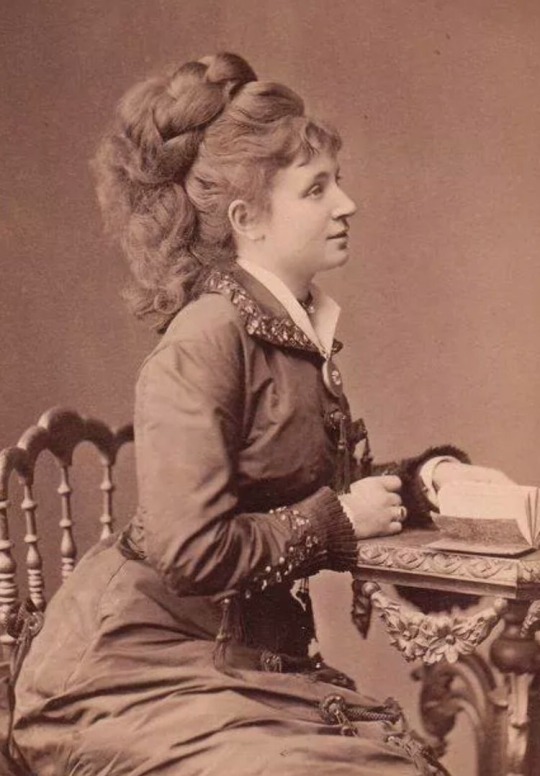

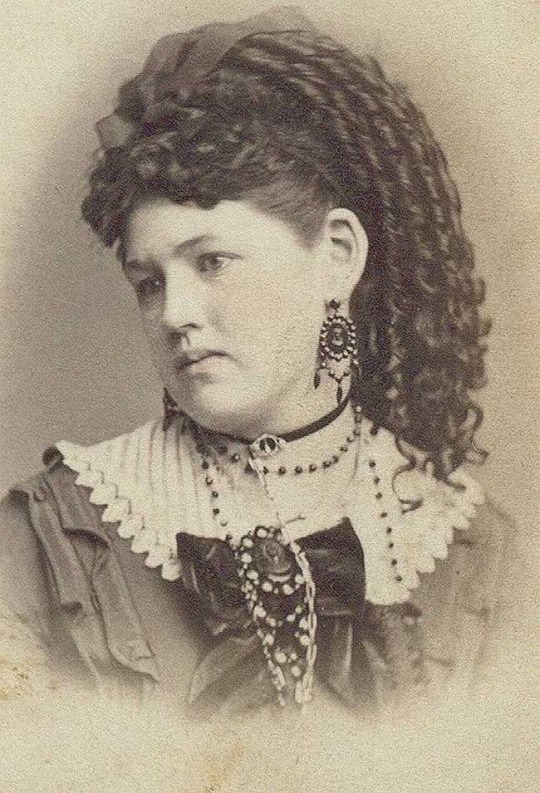

#its so beautiful#bring back extravagant updos like this#1870s#historical fashion#fashion history#hair history#fashion historian#historical costume#victorian#bustle era#19th century#1800s#1871#1872#1873#1874#1875#1876#1877#1878#1879
2K notes
·
View notes
Text
Shortly before the Romanov Tercentenary celebrations in February 1913, Grand Duchess Tatiana Nikolaevna contracted typhoid, and spent much of February and March recovering.


On 21st February 1913 [O.S.] Tatiana wrote after an event in St. Petersburg that she had “a headache the entire time”. By the 24th, she had been confined to bed, and had to be carried by soldiers when the family returned to Tsarskoe Selo. From there, she was quarantined with Alexandra Tegleva, her nursemaid. Tatiana’s big sister, Olga Nikolaevna, wrote daily in her diary about Tatiana’s health, including her temperature, symptoms, and time they spent together.

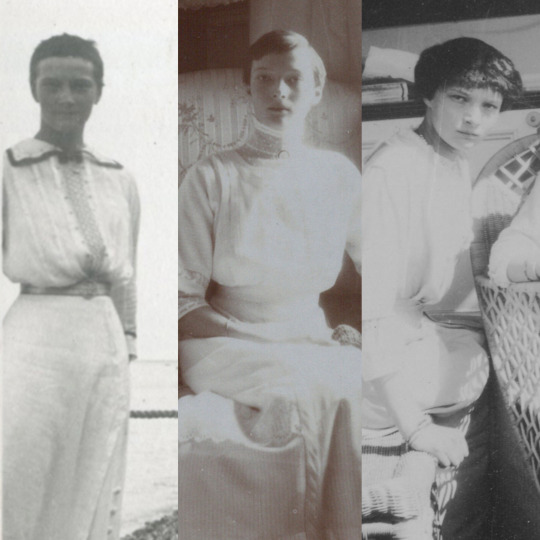
A common treatment after illness was to shave the head, as hair tended to fall out following a serious illness. On 5 March [O.S], Olga wrote in her diary that she sat with Tatiana, “who had her hair cut short.“

Tatiana wore a wig until December 1913, when Alexandra wrote to her brother and sister-in-law that “Tatiana’s hair has grown nice and thick, which means she no longer needs to wear a wig.” Some have claimed that Tatiana was embarrassed about her cropped hair, but the Grand Duchesses’ photograph albums illustrate a different view, that she was comfortable removing her wig around family, friends, and officers, as shown in these photos (see the first photograph of Tatiana taking off her wig on the Standart whilst on holiday in 1913).
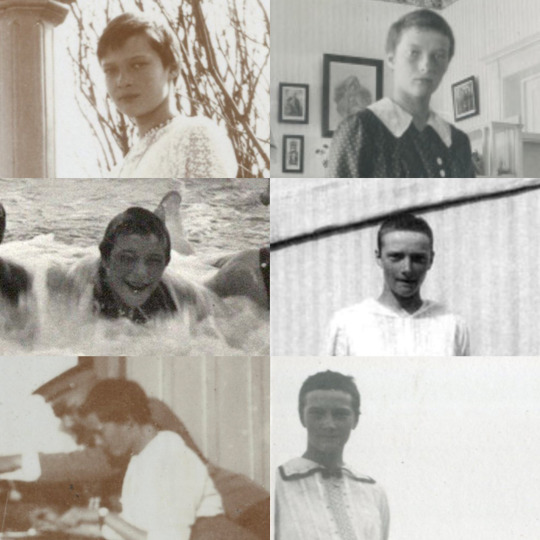

On 26 March 1913 [O.S.], Tatiana wrote in her diary “Could not write because got sick with Typhoid and they [doctors] forbade me to write.” By April, she had fully recovered in time for the Tercentenary.


Sources:
Journal of a Russian Grand Duchess: Complete Annotated 1913 Diary of Olga Romanov - H. Azar
Tatiana Romanov, Daughter of the Last Tsar: Diaries and Letters, 1913–1918 - H. Azar, N. B. A. Nicholson
The Correspondence Of The Empress Alexandra Of Russia With Ernst Ludwig And Eleonore - P. H. Kleinpenning
#Tatiana Nikolaevna#Tatiana Romanov#Olga Nikolaevna#Olga Romanov#Alexandra Feodorovna#Romanov sisters#women's history#Royal history#hair history#my own#1913#Romanov Tercentenary#diaries#letters#sources
64 notes
·
View notes
Text

We have been curling are hairs since ancient times!💜
👩🏻🦱🏺👩🏾🦱
#history#hair rollers#bilboquets#solomon harper#marilyn monroe#hair history#beauty#ancient egypt#curly hair#hollywood#african american history#hairstyle#ancient#1800s#1950s#wigs#royalty#coquette#soft girl#haircare#just girly things#historical figures#womens history#bimbocore#dolletecore#united states#femininity#hollywood history#nickys facts
22 notes
·
View notes
Note
Do you happen to know if it was common for Victwardian women to sleep with their hair totally loose like we see for Edith and Lucille? I have curly-wavy hair and need a sleeping cap or braids or it would be a disaster. Maybe Edith just tosses and turns less than I do with her relatively composed "woke up like this" waves, haha?
It's difficult to say, because most Victorian representations we have of women sleeping or about to sleep are artistic and therefore not the most concerned with realism. It's far more in line with the Romance of the time to have a lady reclining with her hair tumbling over the pillow than to show it braided or in a cap.
However, there are references in beauty manuals of the 19th and early 20th century to braiding one's hair before bed- and occasional photographs/illustrations of women in nightwear with their hair braided -so that seems to have been reasonably common. You also see mention made of silk-lined caps, some even sprinkled with a scent powder to perfume the hair while the wearer slept, though on the balance nightcaps for ladies seem to have been more common in the 18th century (as far as I know). Some manuals also mention sleeping with one's hair loose so that the scalp can get airflow, though, so. Clearly there was some range of opinion.
(They were very big on the idea of respiration through the skin back then, in general.)
Worth noting, though, that we only actually see Edith while sleeping. Lucille's hair is down when she's being intimate with Thomas, but braided once Alan shows up. And in the famous deleted scene with her getting dressed, it's also in a braid. I always assumed that meant she slept with it braided. Makes sense- it's floor-length, so poor Thomas might get smothered in his sleep otherwise.
#ask#anon#crimson peak#dress history#hair history#victorian#edwardian#personally I braid mine too#it's so fine that I'm (perhaps vainly) hoping that will limit breakage
82 notes
·
View notes
Text
On Shirley Polykoff, the woman who wrote the Clairol campaign, "Does she or doesn't she?" for hair dye:
"Once, in the days when she had her own advertising agency; she was on her way to Memphis to make a presentation to Maybelline and her taxi broke down in the middle of the expressway. She jumped out and flagged down a Pepsi-Cola truck, and the truck driver told her he had picked her up because he'd never seen anyone quite like her before. “Shirley would wear three outfits, all at once, and each one of them would look great,” Dick Huebner, who was her creative director, says. She was flamboyant and brilliant and vain in an irresistible way, and it was her conviction that none of those qualities went with brown hair. The kind of person she spent her life turning herself into did not go with brown hair. Shirley's parents were Hyman Polykoff, small-time necktie merchant, and Rose Polykoff, housewife and mother, of East New York and Flatbush, by way of the Ukraine. Shirley ended up on Park Avenue at Eighty-second. “If you asked my mother ‘Are you proud to be Jewish?' she would have said yes,” her daughter, Alix Nelson Frick, says. “She wasn't trying to pass. But she believed in the dream, and the dream was that you could acquire all the accoutrements of the established affluent class, which included a certain breeding and a certain kind of look. Her idea was that you should be whatever you want to be, including being a blonde.”
5 notes
·
View notes
Text
3 notes
·
View notes
Text
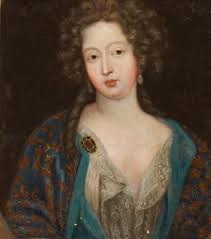
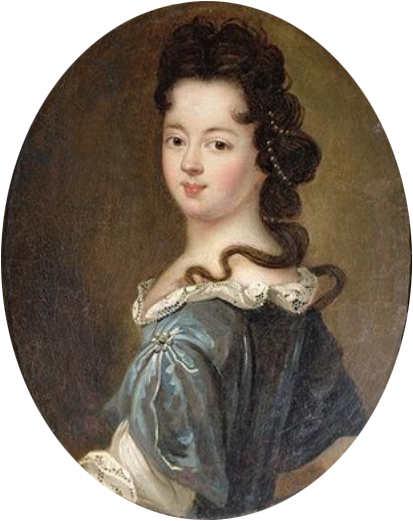
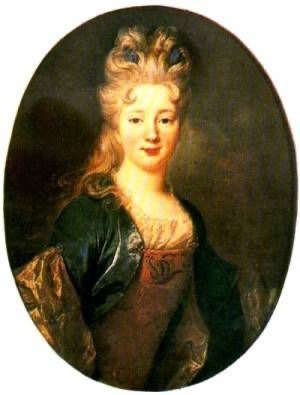
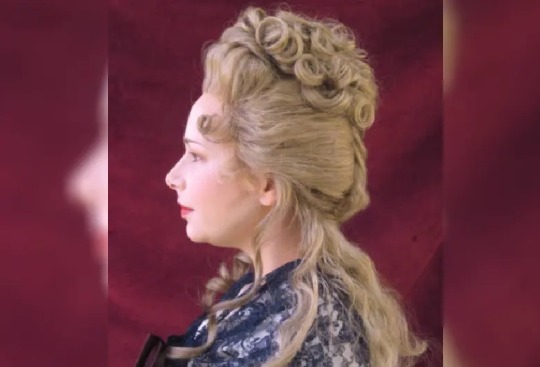
fontanges r so cute especially the little rat tail
#coquette#lana del rey#the virgin suicides#vintage#sylvia plath#17th century#18th century#fashion history#hairstyle history#hairstyles#hair#hair history#1600s#1700s#early 1700s#late 1600s
5 notes
·
View notes
Video
youtube
Hi, my fellow friends. I ask for a little like on youtube. Just that. =)
Thank you for your support.
#hair edges#traditional art#fine art#classical art#european art#female portrait#baby hairs#kiss curls#hair edge#hair history
5 notes
·
View notes
Text
youtube
this started off interesting and then took quite a wild turn :D Props for the attention to detail and dedication!
0 notes
Text
“That One Hairstyle? RETIRE IT!” Black Hair is an Art (pt.1)
(This is part one of two lessons, with this one focusing on how our hair itself! The next lesson will encompass how to incorporate its existence into your writing. It'd be a massively long post otherwise.)
So! Black hair. Black hair is a CENTRAL, ESSENTIAL part of our culture and identity. Writing and drawing it means understanding the vulnerability and trust that comes with access to it, and yes, it is racist to suggest that ‘it’s just hair’ when our hair serves such an important role in our history and art. I already wrote a mini-lesson and ask on the topic, but being aware of what our hair looks like, and what means to us, will help you to understand why we care that you put in the effort to get it right.
Hair Textures
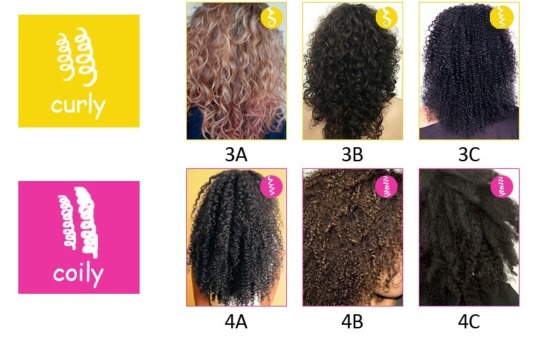
We are not a genetic monolith! However, for the sake of this series, we are focusing on 3C-4C, because 1) it's most likely to be seen in life and 2) least likely to be seen in popular art! When you are creating your characters, consider the style and care for THESE textures. I will get more into this next lesson.
Let's get into SOME of the hairstyles!

Afros (36 Afro Hairstyles)
“So, what’s the phenomenon behind the Afro? Well, it’s our hair in its most natural form, but that’s only part of the phenomenon. It’s a way to fight the status quo without saying a word.”
-Ebony Magazine, The History of the Afro
When nonBlack society hears ‘afro’, they think completely picked out, Black power imagery, political statement. And it was, and is! But in actuality, afros are just the natural hair growing out of a Black person's head. The same way your hair grows out of your head. Our texture. Even my hair is not allowed to be ‘hair’, it has to ‘assign’ my Blackness; my distance from whiteness. Imagine, the hair growing out of your head being automatically associated with how you should be perceived. Just by existing, it is making a statement in a Eurocentric society.

Braids (31 Braid Styles)
There are SO MANY TYPES of braids and ways to wear them. If you can imagine a design, I bet there's a Black braider that can do it!
CORNROWS ARE NOT AUTOMATICALLY BRAIDS! Internalize this! They may be used in the same style, but they are NOT INTERCHANGEABLE TERMS!
Braids are considered a protective style; that is, a hairstyle designed to let our hair 'rest' and grow without having to manipulate it. If you have a Black character that's constantly on the go and/or doesn't have time to focus on their hair, and you want an accurate, more true-to-life experience for them, braids can be a crucial part of character design.

Locs
(Yes, while that link has plenty of examples, it was also self-indulgent. Locs are gorgeous, Black men with locs are gorgeous!)
"Locs vs Dreads": As someone in the loc community, there’s been a push to refer to the style as ‘locs’, rather than ‘dreadlocks’. Some people with the style will not care, but others take it very seriously, so it’s something to keep in mind. There’s a societal stigma behind having locs, that they’re ‘dirty’ or ‘unkempt’ or ‘lazy’ and that is NOT true. Locs are beautiful, and they take far more effort than people seem to want to believe lmao.
Locs, though there is currently a positive revival, are still highly discriminated against. Kids have been expelled from school and even have had their hair forcibly cut off to be allowed to participate in sports. Many places won't hire you if they think your hair is 'unprofessional' or 'dirty', especially if you're a Black woman. To consider yet another example of the hair that grows out of my head 'dirty' is extremely racist.
LOCS ARE NOT BRAIDS!!!!
Locs are also a protective style, albeit a much more permanent one, and one that comes with a long history and culture behind it. Many Black people consider the biblical story of Samson to be a man with locs, and that our locs hold power within them. That not just anyone should be allowed to touch your locs. So, if you're interested in mythology and powers, that might be an intriguing way to go, that would be possible if you had a Black character with locs!
In Professional Media
The lack of awareness and concern about our hair isn't just a fan or amateur creator experience. It is ubiquitous in the professional media world. Black actors, actresses, and models have discussed having to do their own hair when working, because no one would properly care for it on set if it wasn't familiarly white. It’s admittedly grown better- however! After decades of not having options other than ‘stereotypical afro’, ‘box cut’, and ‘white people hair’, it is LONG PAST TIME to stop settling for the bare minimum in Black character design. We can tell when "one of us" (with some sense, at least) wasn't in the room to make decisions in popular media.
If you were curious about the lesson title, here's a current example of what I'm talking about in video games. Tell me if you see a pattern:
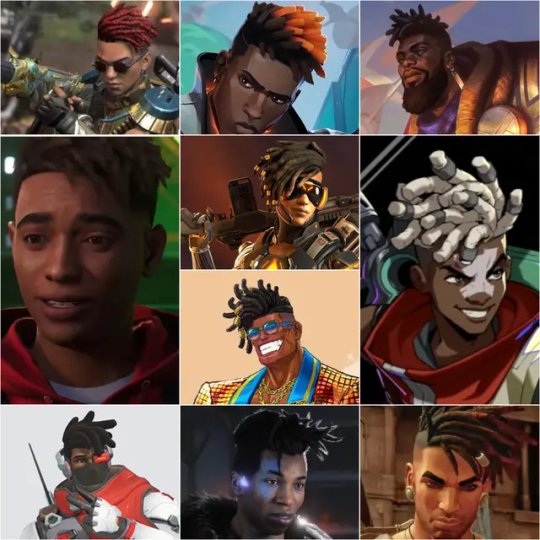
This style? The Killmonger? We seent it!!!! It has become the “hairstyle to show I understand the exaggerated swagger of a young Black teen” option, the "I know the Black people!" go-to, and frankly, we are all tired of it. Okay it was cute on Ekko. The Black Delegation DEMANDS the professional video game industry pick something else! We have SO MANY DIFFERENT HAIRSTYLES!
I'll give you an example on the other end (not trying at all; refer to Lesson 1) from one of my favorite games, Hades:
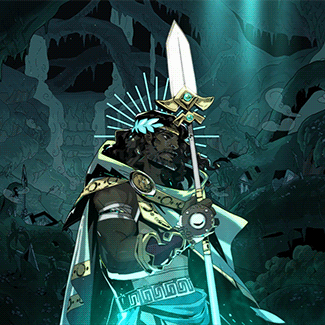
This is my blorbo. My favoritest guy. I’ll fight for Patroclus being Black til the day I die. While I begrudgingly settled in my excitement, I can tell you no one Black with any voting power was in the room at Supergiant when they approved this design. Why? His texture! Locs were such an easy option if they wanted long hair! Locs existed BEFORE Ancient Greece! The man did not have a flat iron while fighting in a war! A good Black designer would have considered that!
To give him a more accurate design, some artists (myself included) lean into giving him locs (one of my favorites is @karshmallow 's Pat; a phenomenal example in caring about your Black characters). It’s something Black fans find themselves doing- redesigning Black characters. That's not something we should have to do at all, especially in media we pay for!
But if you REALLY want your Black character to have straight hair, that leads into the last style of this lesson:
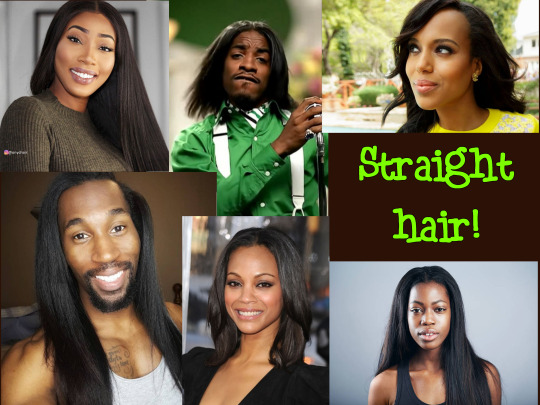
Straight Hair
We do have straight hair. But it’s not straight because it grew out that way! It will still look and be thicker! It might be a wig or a sew-in (human or synthetic), it might be flat-ironed (while relaxed? While natural?) It takes effort to get and maintain straight hair.
'I think it looks better good this way!'
If you catch yourself thinking this, this is a racist statement. Whether you’re aware of it our not, there is a bias towards Eurocentric/white features in our society, and that includes in our media. When you think “I only drew [this Eurocentric hair texture and style] because I think it looks good on them!” I want you to PAUSE and think about the WHY. WHY do you think that this Black person’s natural features are unattractive in comparison to the white hair texture you gave them? And how hurt might a Black peer of yours would feel hearing that you find their natural features not worth drawing because they’re “not attractive”. It requires approaching your own internal biases, recognizing them, and then working to unlearn them. And that means practice! Using references to draw our hair and styles, and growing used to using OUR features on US!
Doing it in Art
Me personally, I think if you think drawing thinner hair textures is easy, thicker hair textures should be a BREEZE. I was curious, so I challenged myself and-

(it took me about thirteen minutes total to do ol boy's hair and it's still not right. I'm sick fr y'all don't even know 🤢)
@ackee has a really good art lesson on the how-tos of drawing Black hairstyles. I highly recommend checking it out, as well as following and supporting a fellow Black artist (who is far better than I!)
Hair Brushes
Finally, an option you can use for painting is downloading Black hair brushes! Vegalia has an amazing array of brushes with different types of curls, locs, and braids at her Etsy store! You can also follow her on social media to see how she applies them, and support yet another amazing Black creative!
I know this was a long one, but you made it! Just keep going. Remember, it's the thought that counts, but the action that delivers!
#creatingblackcharacters#black art#black characters#character design#black hair#black history#black culture
3K notes
·
View notes
Text



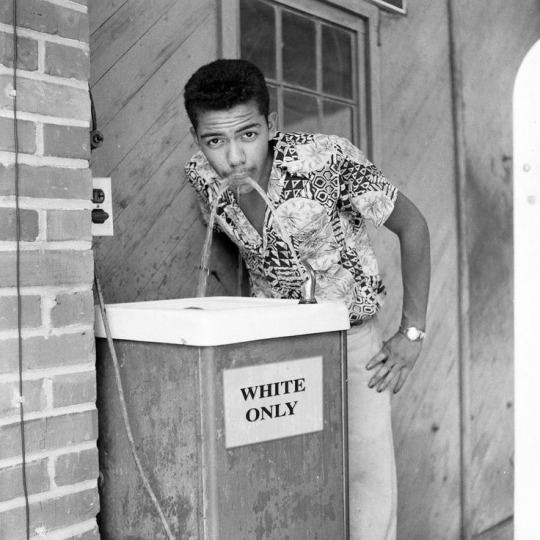



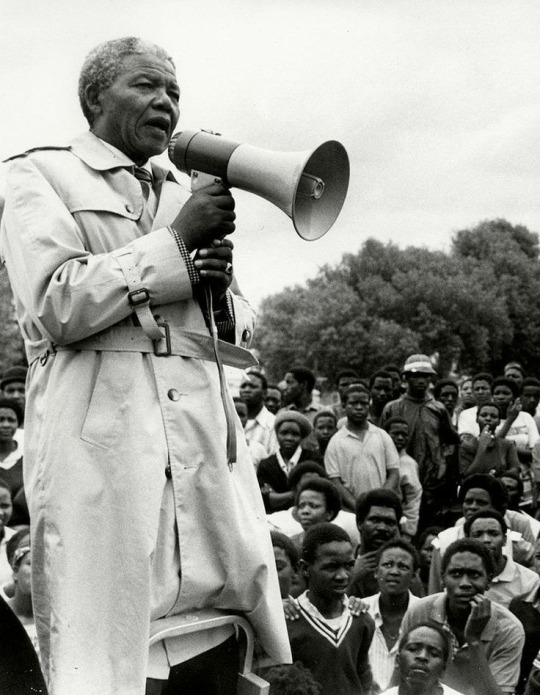
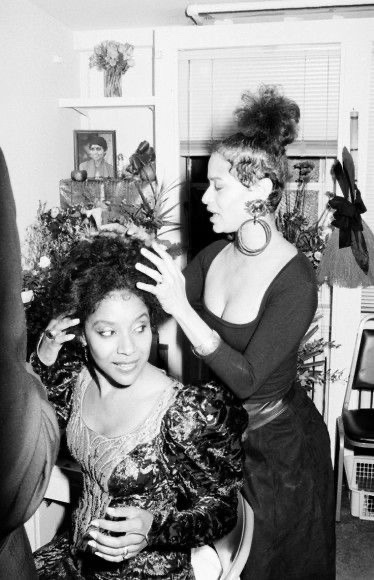

Happy Black History 🤎
#black girl aesthetic#black girl blogger#pinterest#black girls of tumblr#black girl joy#black girl magic#black boy aesthetic#blck history#black history#black hair#black men#black women#harriet tubman#madam cj walker#donna summer#malcolm x#martin luther king jr#james baldwin#maya angelou#toni morrison#eartha kitt#teresa graves#nelsonmandela
3K notes
·
View notes
Text
A Jheri Curl Rant??
So I randomly looked up the history of the Jheri curl hairstyle today. Why? IDK. My brain is in the blender right now. Anywho, I was wondering what the differences were between that and a modern wash and go hairstyle.
From what I found, there were 2 big differences, the activator for a Jheri curl was super oil based, meaning that it didn't dry down at all. That's why a lot of clothes and furniture got ruined during that time. The second thing is that, basically, a Jheri curl is just a looser relaxer. Instead of making the hair bone straight, it would loosen the natural curl. But, essentially, it was the same thing. Same chemicals, same damage.
Another fun fact about the Jheri curl hairstyle is that it was marketed as a cheap and low maintenance hairstyle, which was really appealing to black people because our hair can be really tough to take care of when you don't now what you're doing. But in actuality, it required just as much maintenance as everything else. Plus the activator, which ran out very quickly and cost quite a bit per bottle, was ruining people's stuff so they'd have to buy more.
This is what I decided to look up instead of taking my afternoon break…
0 notes
Text
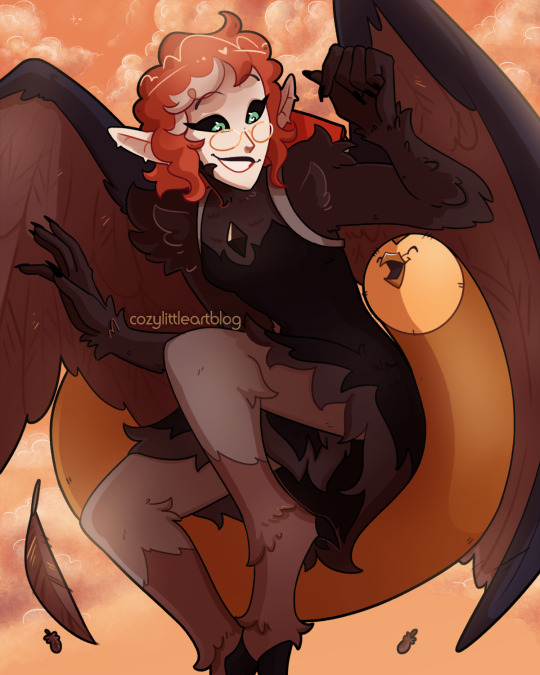
i now understand how certain people felt when harpy eda was revealed 😳
prints here
#toh#the owl house#toh fanart#lilith clawthorne#hooty#toh finale#watching and dreaming#captioned#WOW. WOOO OW. GOODNESS. MA'AM. QPR PLEASE??? PLEASE??? WOW#i both literally am her and i want to kiss her. Wow!#she is the ideal woman. her particularly early 20th century fashion sense. she's a big nerd. she appreciates history. she's aroace. she's a#bird lady who can fly. she has curly hair. Oh Jeez It Does Not Get Better Than That#sorry anyway i cant believe i won twice in a row with ladies (queen and lilith) who are specifically tailored to me and no one else /j#digital art#illustration#a small victory against my art block even though this took like 4 or 5 days to chip through. but i did it#there are some parts i feel a little clueless about so#critiques welcome#lilith please pick me up and fly my gay ass off into the sunset please im beg
8K notes
·
View notes
Note
I have a question re: the ambrotype portrait of the two children and a cat (1855-60s). If I am not mistaken, the girl's hairstyle looks like a bobbed cut. Was that a common (or at least not unusual) hairstyle for young girls in that era? Thanks.
Very common! You see lots of young girls with short hair in images from about the late 18th-early 19th century onwards:
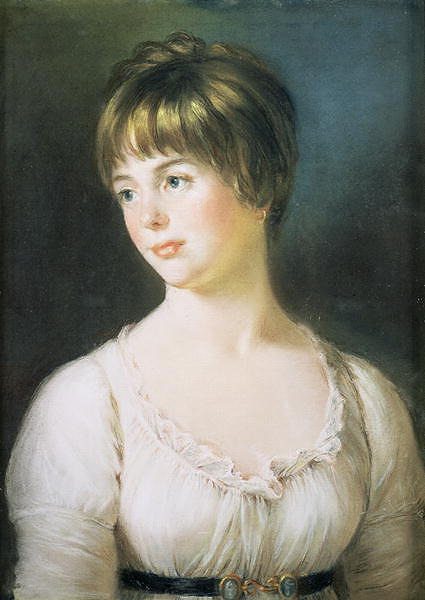
Portrait of a young girl attributed to John Russell. The website I found says c. 1780, but I'd guess more like 1790s-1810s. Note that similar hairstyles were also popular with adult women at the time, briefly.

Portrait of a young girl and a boy, both unknown, by Royall Brewster Smith. c. 1830.
and you see that specific chin-length bob tucked behind the ears a lot in the 1860s particularly:
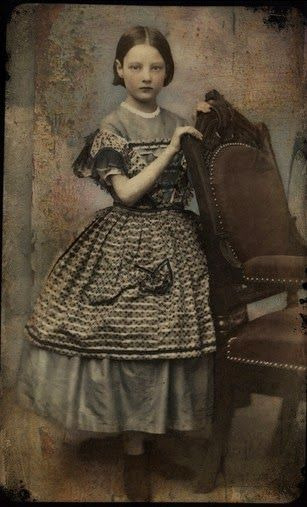
Tintype of a young girl, 1860s.

Little girl, apparently taken in Paris. 1860s.
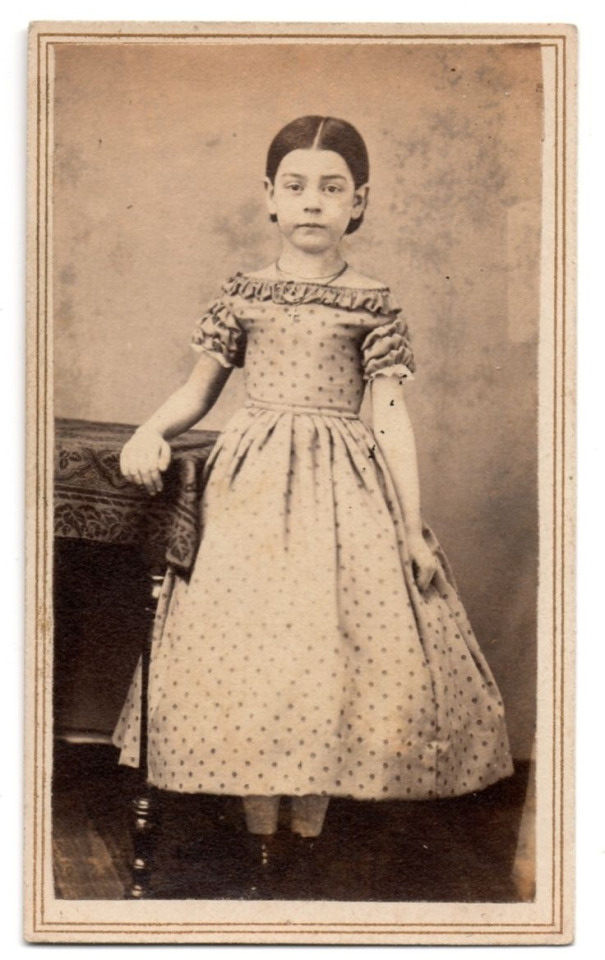
Not much info about this one, but it looks 1860s too.
it even appears on molded-hair dolls of the time:

papier-mache doll, 1860s. once had some bright spark tell me these were actually 1930s boudoir dolls- when I pointed out that they had 1860s children's hairstyles, he said, "well, those are also 1930s ladies' hairstyles!" this man was a PROFESSIONAL DOLL APPRAISER, and these "pumpkinhead"-type 1860s dolls are recognizable on sight to most collectors. and they look nothing like boudoir dolls, which are usually composition when they aren't entirely cloth. not papier-mache. what an ass.
obviously, some little girls had long hair in all of these eras. but short hair was much more commonplace for them than it was for adult women (excepting the Regency-era painting at the top)
#ask#anon#long post#history#children's history#victorian#regency#children's fashion#hair history#beauty history
79 notes
·
View notes
Text
Thoughts About Hair
Professor Pski's post about Mrs. Oliver's use of hairpieces and other artifices puts me in mind of the complicated relationship many of us have with our hair. Hair and the care sunk into it represent time, money, and a myriad of other things that have been expounded on at length by wiser heads than mine. We grow it long in hopes of unlocking a secret self hitherto unsuspected, or cut it short in the belief we are saving ourselves the time and money and fuss we spent on longer hair. Hairdressers and beauty magazines tell us to take into account our face shape, overall bone structure, body, lifestyle, and personal preference. "That new hair color is so you," we tell our friends.
Stick straight or softly waved hair was the business for so, so many years, although there is a rise now in celebrating the real texture of one's hair--be it wavy, curly, coily, or kinky. The stick straight hair, I suspect, really took off in the 1990s as a reaction to 1980s glitz and excess. By the time the new millennium rolled around it had everyone and their mother in a virtual stranglehold. Curly hair was suddenly a source of shame: Straight hair with a slight gloss was supposed to be the norm. This was reflected in popular media, naturally, and leading ladies previously known for their free-flowing curls had a sudden urge to straighten their hair as a result.
I was a curly-haired child during those years (my relative youth is showing). The adults thought my hair was beautiful and said they wished they could grow theirs like that. All my peers saw was a gravity-defying mess that it was clear I hadn't a clue how to care for. All through grade school and into middle school they found new ways of reminding me how ugly I was. In my teenage years I took to blowing my hair straight out of desperation, which of course made it even more of a mess.
I chopped it all off aged 20, and for a decade I never let it dip below my ears. "I miss your long hair," one friend in my old circle would tell me. Others who had just met me for the first time would wonder aloud how I'd look with longer hair. "Grow your hair!" one woman hissed at me. I was sometimes mistaken for a young man. Short hair was also a line of self-defense for me, living in the area I did: It meant that any potential assailant would have to take that extra moment to pause and figure out if I was a man or a woman. Short hair was safety; short hair, funnily enough, had also been my mother's default for years.
While I love the chic look sometimes conferred by short hair, it was always first and foremost my mother's haircut--not to mention my grandmother's haircut before that. For some time now I've been trying to grow out my hair. I don't know if I'm succeeding. In any event I've been successfully coaxed back to the long-haired crowd. (The hairstyles are so pretty, and I'd have to be made of stone to resist that.)
0 notes